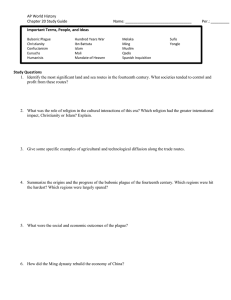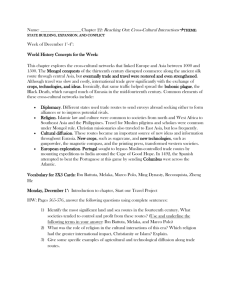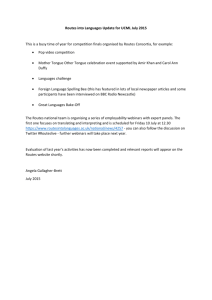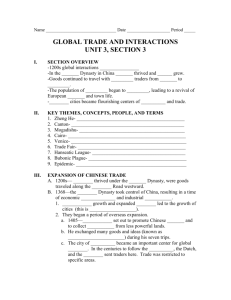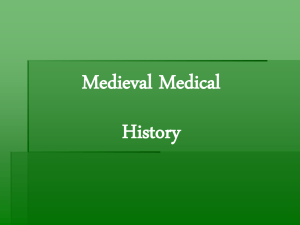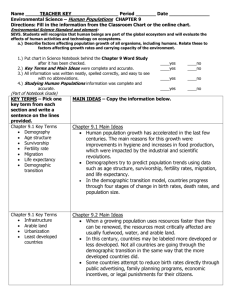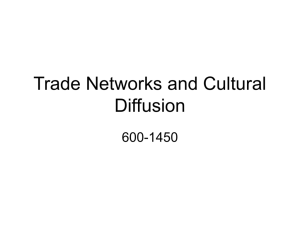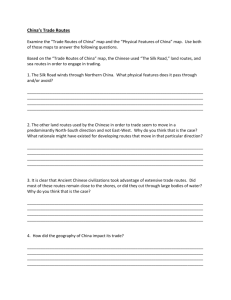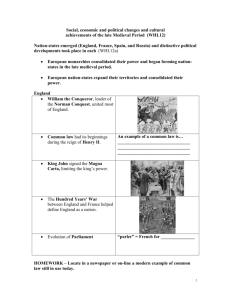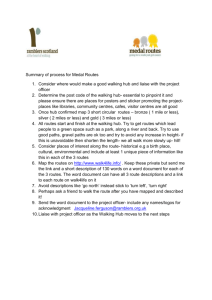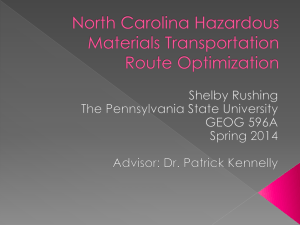Chapter 22 Study Guide
advertisement
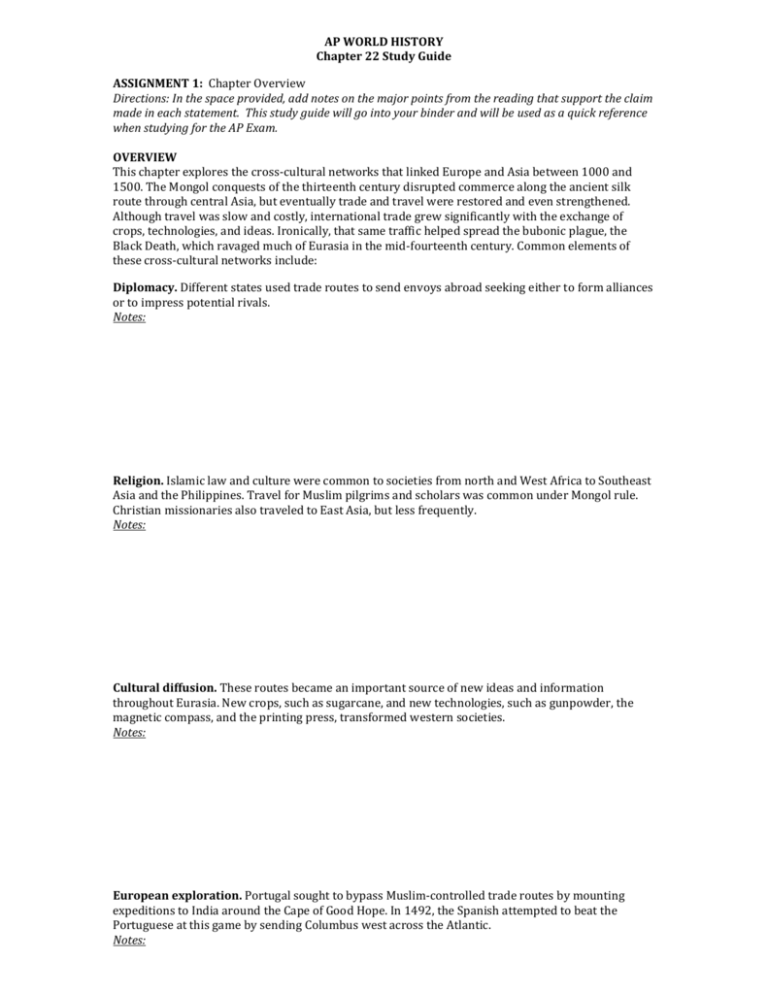
AP WORLD HISTORY Chapter 22 Study Guide ASSIGNMENT 1: Chapter Overview Directions: In the space provided, add notes on the major points from the reading that support the claim made in each statement. This study guide will go into your binder and will be used as a quick reference when studying for the AP Exam. OVERVIEW This chapter explores the cross-cultural networks that linked Europe and Asia between 1000 and 1500. The Mongol conquests of the thirteenth century disrupted commerce along the ancient silk route through central Asia, but eventually trade and travel were restored and even strengthened. Although travel was slow and costly, international trade grew significantly with the exchange of crops, technologies, and ideas. Ironically, that same traffic helped spread the bubonic plague, the Black Death, which ravaged much of Eurasia in the mid-fourteenth century. Common elements of these cross-cultural networks include: Diplomacy. Different states used trade routes to send envoys abroad seeking either to form alliances or to impress potential rivals. Notes: Religion. Islamic law and culture were common to societies from north and West Africa to Southeast Asia and the Philippines. Travel for Muslim pilgrims and scholars was common under Mongol rule. Christian missionaries also traveled to East Asia, but less frequently. Notes: Cultural diffusion. These routes became an important source of new ideas and information throughout Eurasia. New crops, such as sugarcane, and new technologies, such as gunpowder, the magnetic compass, and the printing press, transformed western societies. Notes: European exploration. Portugal sought to bypass Muslim-controlled trade routes by mounting expeditions to India around the Cape of Good Hope. In 1492, the Spanish attempted to beat the Portuguese at this game by sending Columbus west across the Atlantic. Notes: 1. Identify the most significant land and sea routes in the fourteenth century. What societies tended to control and profit from these routes? 2. What was the role of religion in the cultural interactions of this era? Which religion had the greater international impact, Christianity or Islam? Explain. 3. Give some specific examples of agricultural and technological diffusion along the trade routes. 4. Summarize the origins and the progress of the bubonic plague of the fourteenth century. Which regions were hit the hardest? Which regions were largely spared? 5. What were the social and economic outcomes of the plague? 6. How did the Ming dynasty rebuild the economy of China? 7. Note the kind of state to emerge in the fifteenth century in northern Italy, France, England, and Spain. Which was the most powerful state at this time? 8. What were some of the distinctive elements of the artistic Renaissance of western Europe in the fifteenth century? 9. How were the Ming Chinese able to establish a forceful presence in the Indian Ocean in the fifteenth century? When and why did this presence cease? 10. What were the Portuguese objectives in the exploration of the coast of west Africa? What did they accomplish? 11. What did Columbus hope to accomplish when he set forth across the Atlantic in 1492? What did he achieve? 1. Try to imagine the impact of a catastrophe such as the bubonic plague on European society. How did people behave? What was the impact on social relations? (Consider this: how would you behave in such a crisis? Would you live your life any differently?) 2. What are some of the common elements in the process of European state building? What specific measures did the national monarchies take in order to establish and maintain their authority? Who did they need to control? 3. What were some of the common concerns of the Renaissance humanists? How would these goals be expressed today? Does the word humanism mean the same thing today as it did then?
